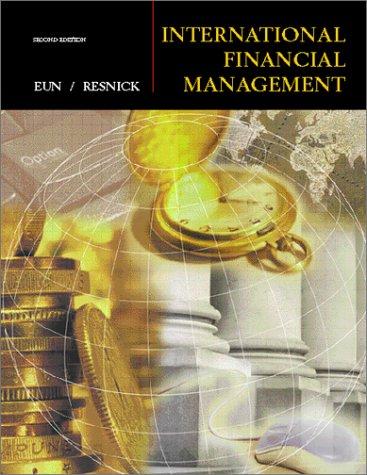Question
1.A firm has a significant amount of debt outstanding and its operations hit a rough patch. If it appears that bankruptcy is imminent, the firms
1.A firm has a significant amount of debt outstanding and its operations hit a rough patch. If it appears that bankruptcy is imminent, the firms management may invest in high-risk projects having a negative NPV because:
A.the firms equity beta is now negative.
B.the firms debt beta is now negative.
C.corporate income taxes are no longer a concern.
D.the firms debt holders bear most of the projects downside risk.
2.Home Builder Supply, a retailer in the home improvement industry, currently operates seven retail outlets in Georgia and South Carolina. Management is contemplating building an eighth retail store across town from its most successful retail outlet. The company already owns the land for this store, which currently has an abandoned warehouse located on it. Last month, the marketing department spent $10,000 on market research to determine whether to build and open the new store. Which of the following should not be included as part of the incremental free cash flows for evaluating the proposed new retail store?
A.The cost of demolishing the abandoned warehouse and clearing the lot.
B.The expected loss of sales at its existing retail outlet, if customers who previously drove across town to shop at the existing outlet become customers of the new store instead.
C.The $10,000 in market research spent to evaluate customer demand.
D.Construction costs for the new store.
E.The value of the land if sold. There is currently an offer of $250,000 from an interested buyer
3.The pecking order theory of capital structure predicts that firms will fund positive NPV projects first with internally generated funds, then with debt, and finally with new equity. What is the primary insight of the pecking order story theory that leads to this funding ordering in which equity is only issued as a last resort?
A.Issuing debt is always superior to issuing equity because interest paid to debtholders is tax deductible whereas dividends paid to shareholders are not.
B.The opportunity cost of internally generated funds is low in comparison to issuing new debt or equity because the alternative to retaining the funds and investing in new projects is to pay the funds out as dividends.
C.Issuing equity dilutes earnings per share.
D.Investors and managers are asymmetrically informed about the firms operations and value. There is an adverse selection cost of issuing equity because investors believe a firm is likely to issue equity when management believes the firms stock is overpriced.
Step by Step Solution
There are 3 Steps involved in it
Step: 1

Get Instant Access to Expert-Tailored Solutions
See step-by-step solutions with expert insights and AI powered tools for academic success
Step: 2

Step: 3

Ace Your Homework with AI
Get the answers you need in no time with our AI-driven, step-by-step assistance
Get Started


